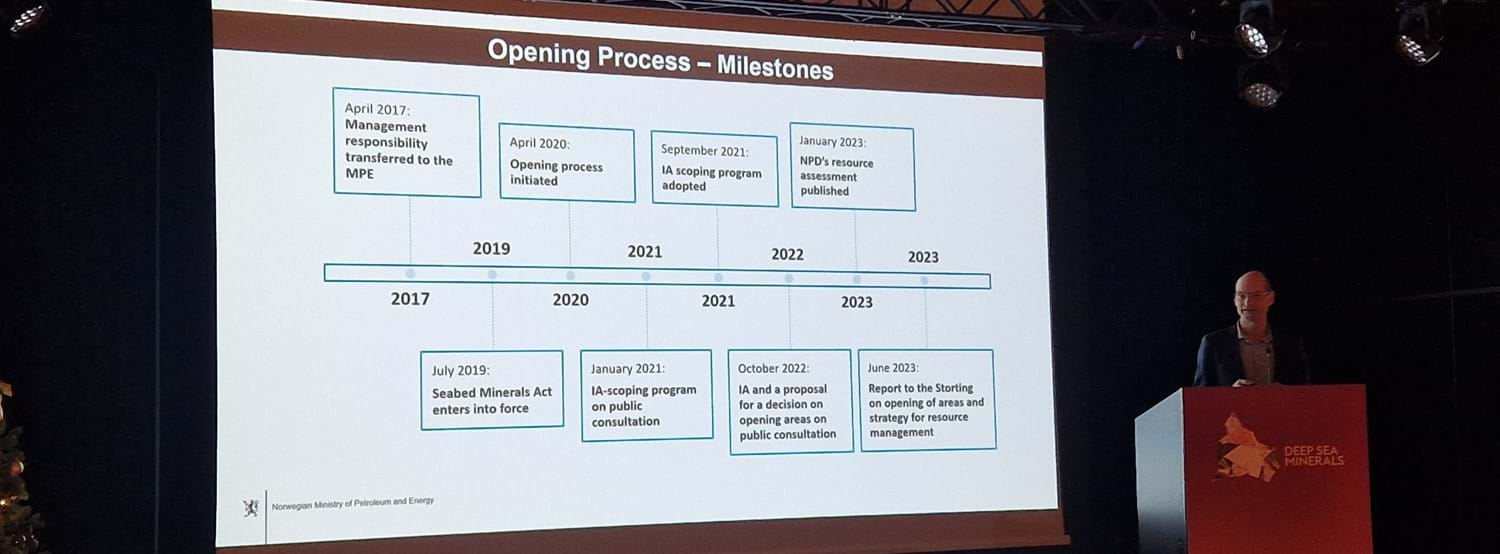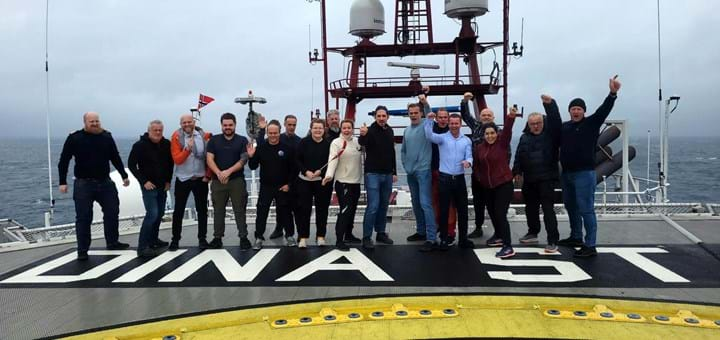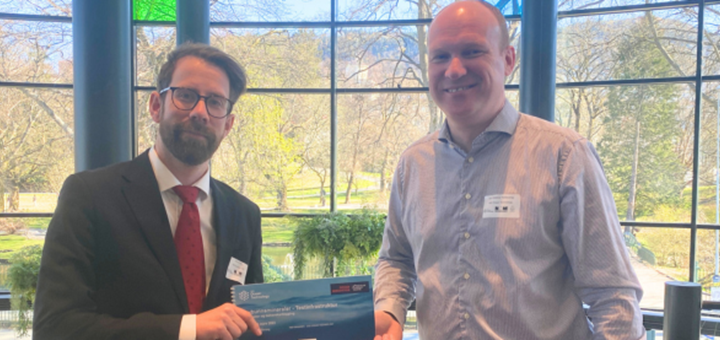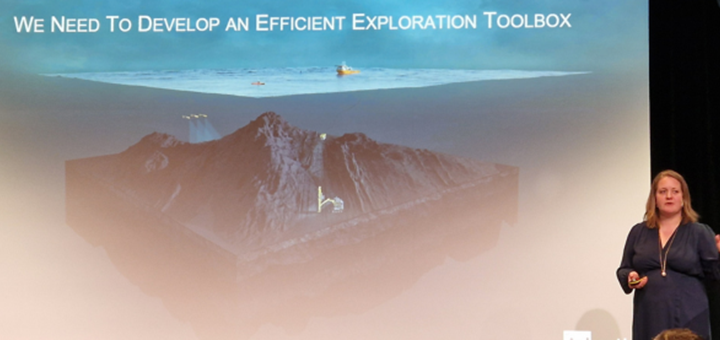Pointing the way forward to get more information

New and large mineral discoveries, the legal framework moving forward and exciting new technologies, were some of the highlights at this year’s Deep Sea Minerals Conference in Bergen.
At a press conference earlier this week, the four major political parties in the Norwegian parliament announced that they had come to an agreement to open up for industry to take part in seabed minerals explorations.
This decision could potentially lead to seabed mining, if it can be demonstrated that the resource potential is sufficiently high, and the environmental implications are acceptable.
A key modification to the opening bill is the need to get back to the parliament in between the exploration and mining phase.
Aiming for licencing round next year
Terje Aasland, Minister of Petroleum and Energy, opened the conference. He believes the parliamentary notice is pointing the way forward towards acquiring more information.
– The key drivers are to secure the supply of critical minerals in a fast-growing market, said Lars Erik Aamot, Director General at the Norwegian Ministry of Petroleum and Energy, as he outlined the next steps in more detail.
The resource management strategy is opening large areas with a stepwise process through licensing. It is planned a joint effort from industry and state on mapping and knowledge gathering. Aamot envisions a licencing round already in 2024.
New and large mineral discoveries
Rolf Birger Pedersen, professor at the University in Bergen presented several large discoveries in the different research cruises conducted last year.
The Deep Insight research cruise being part of the EMINENT-project has probably found the largest extinct mineral deposit of-axis the Mid-Atlantic Ridge. This could be described as a discovery-by-accident in the prospective flanked area, while trying to better understand the geology.
Pedersen further presented the Ultima Thule discovery at the Knipovich Ridge. This is expected to be one of the largest hydrothermal mineral deposits yet known in the deep sea.
Close collaboration and data sharing is key
It was very encouraging to see how universities and industry work together on several projects, such as the ATLAB project headed by NTNU was co-presented by several industry players.
We were also given very encouraging results by Green Minerals testing processing of seabed massive sulphides mixed with land-based minerals. This and many other results suggest the potential to establish a complete value chain for seabed minerals.
Better sharing of data was highlighted by several speakers in the effort to learn more about the deep sea environment and ecosystem.
We still need a lot more data before deciding if production of seabed minerals will make sense. The Norwegian industry believe they have all the possibilities to succeed and the Norwegian data-driven licence-path secures either mining with a world leading ESG performance or no mining at all.
About
The Deep Sea Minerals Conference is an international conference arranged for the 3nd time in Bergen Norway between 5-7 December.
It is visited by industry professionals, environmental groups, policymakers, the geoscience community and other stakeholders who are eager to learn more about an emerging global industry.



